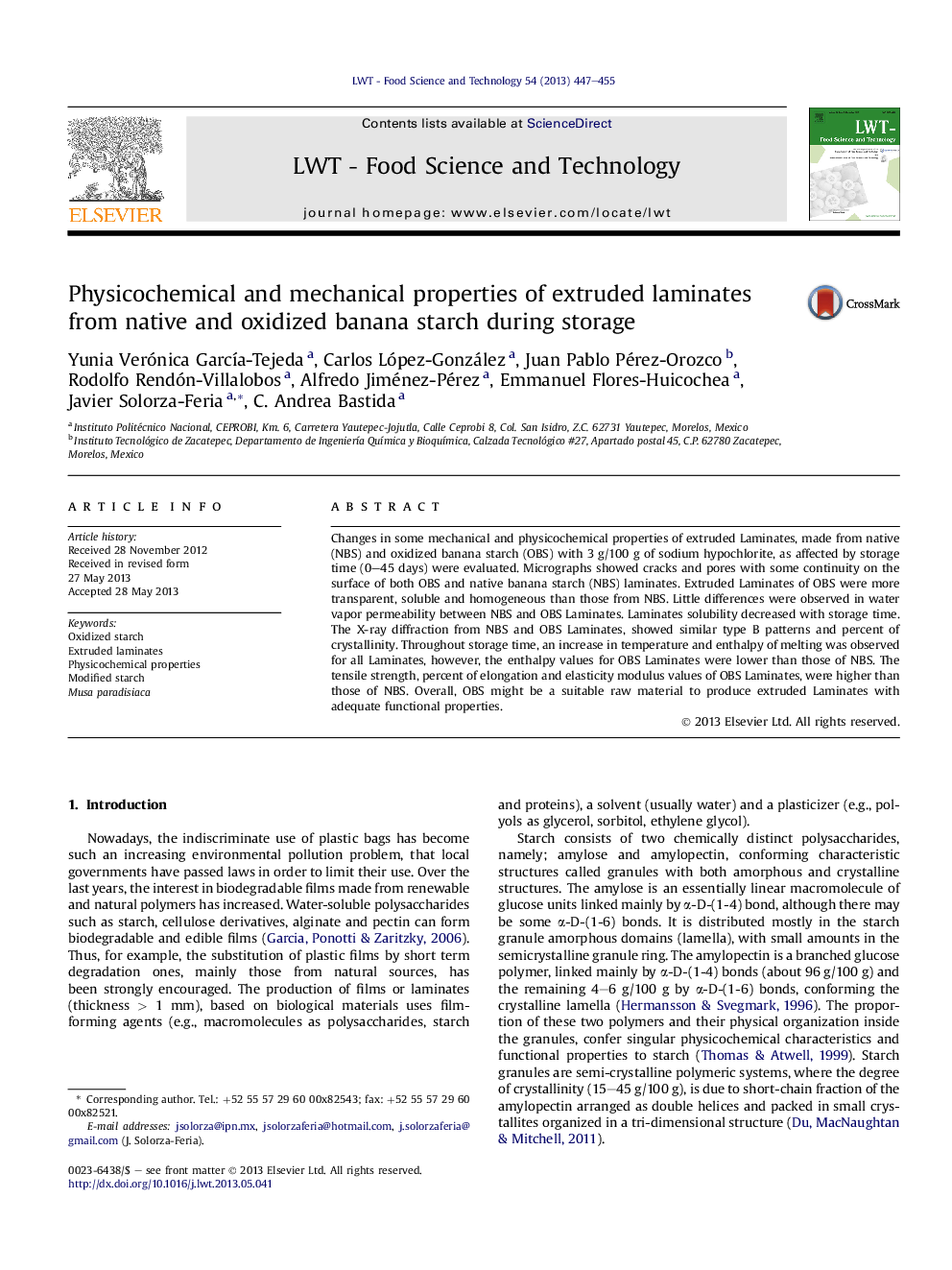| Article ID | Journal | Published Year | Pages | File Type |
|---|---|---|---|---|
| 6404593 | LWT - Food Science and Technology | 2013 | 9 Pages |
â¢Banana starch is readily isolated, abundant, cheap and potentially useful in Mexico.â¢Changes in laminate physical properties from native and oxidized banana starch were evaluated.â¢Oxidized starch laminates were more transparent and more homogeneous than native counterparts.â¢The X-ray diffraction of laminates from both starches showed similar type B patterns.â¢All mechanical properties were higher in oxidized starch laminates.
Changes in some mechanical and physicochemical properties of extruded Laminates, made from native (NBS) and oxidized banana starch (OBS) with 3Â g/100Â g of sodium hypochlorite, as affected by storage time (0-45 days) were evaluated. Micrographs showed cracks and pores with some continuity on the surface of both OBS and native banana starch (NBS) laminates. Extruded Laminates of OBS were more transparent, soluble and homogeneous than those from NBS. Little differences were observed in water vapor permeability between NBS and OBS Laminates. Laminates solubility decreased with storage time. The X-ray diffraction from NBS and OBS Laminates, showed similar type B patterns and percent of crystallinity. Throughout storage time, an increase in temperature and enthalpy of melting was observed for all Laminates, however, the enthalpy values for OBS Laminates were lower than those of NBS. The tensile strength, percent of elongation and elasticity modulus values of OBS Laminates, were higher than those of NBS. Overall, OBS might be a suitable raw material to produce extruded Laminates with adequate functional properties.
